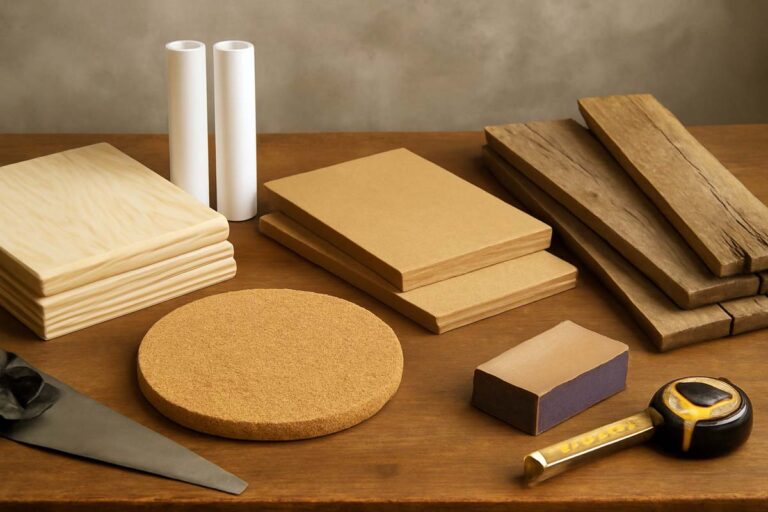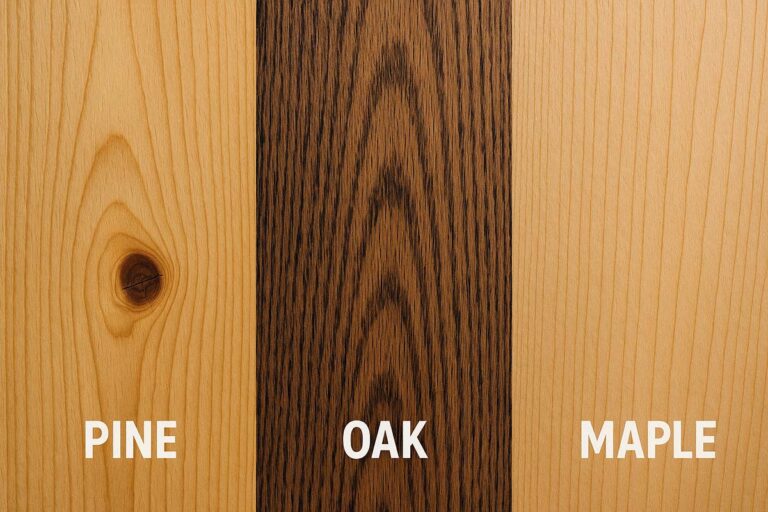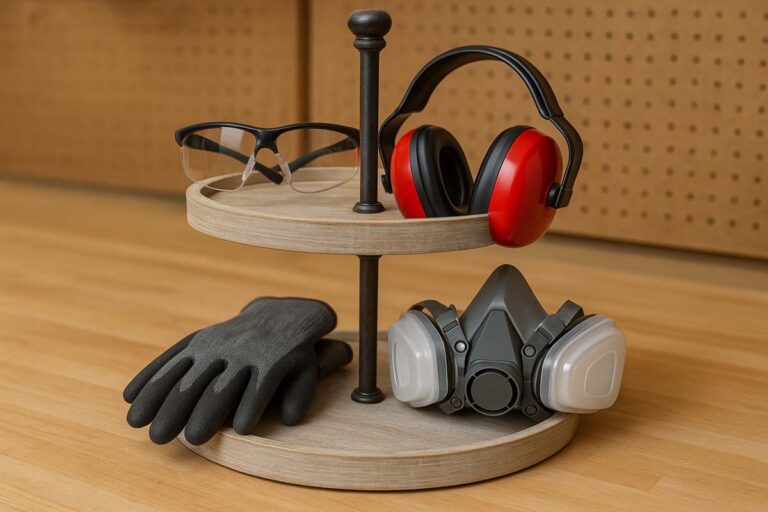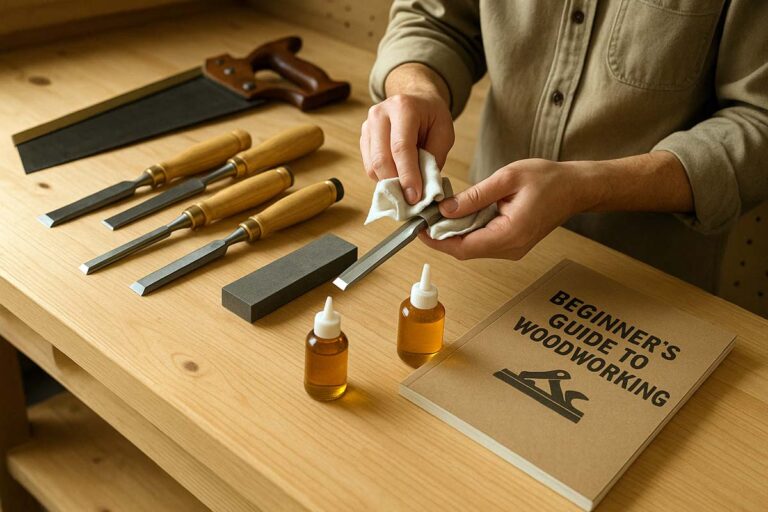The 6 Best Wood Types for Sturdy Tiered Tray Stands
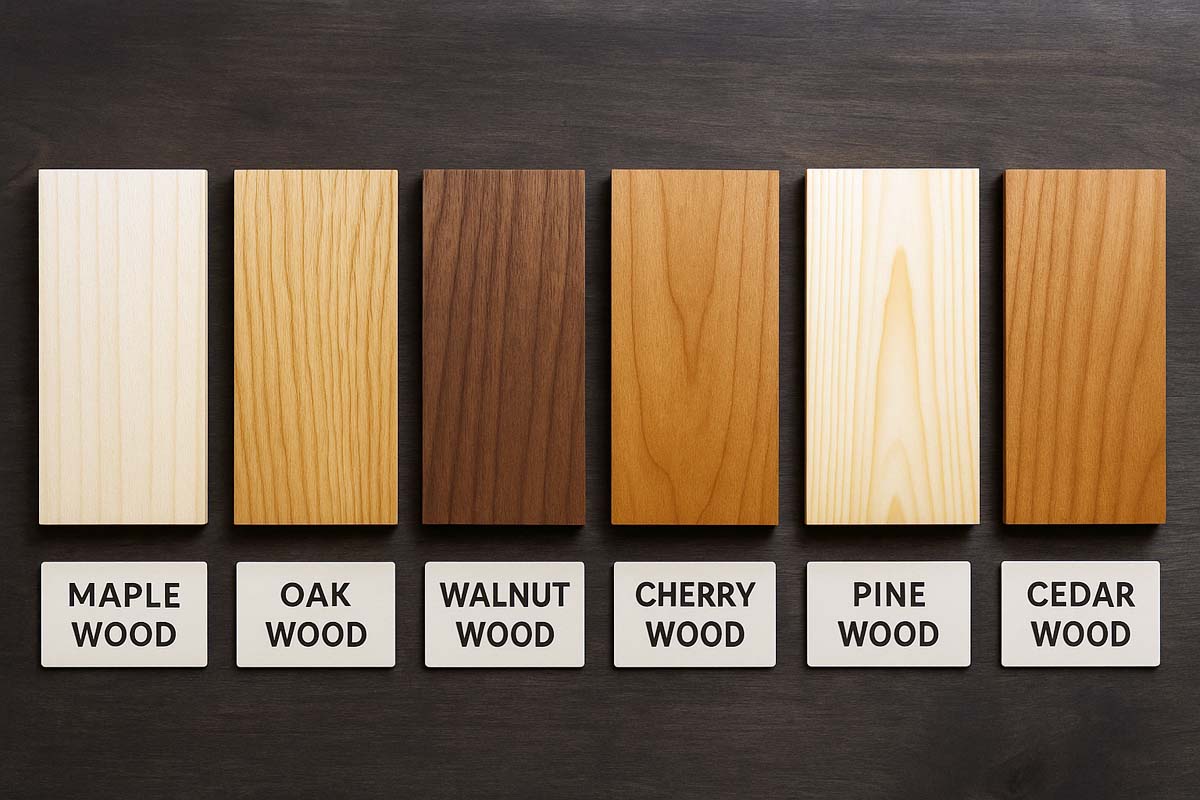
When it comes to creating the perfect tiered tray stand, choosing the best wood types for sturdy tiered tray stands is essential. The right wood not only ensures your stand is strong enough to hold multiple items, but it also plays a huge role in the overall look and feel of the piece.
Whether you’re a seasoned woodworker or just getting started, picking the right wood is key to crafting a beautiful, durable stand that will last.
In this guide, I’ll break down the best wood types for sturdy tiered tray stands. I’ll cover the characteristics of each wood, why it works well for these projects, and what you should consider to make sure you end up with something that not only looks great but can last for years.
Contents Here
- 1 Why Wood Choice Matters for Tiered Tray Stands
- 2 1. Maple Wood: A Classic Choice for Sturdiness
- 3 2. Oak Wood: The Ultimate in Durability
- 4 3. Walnut Wood: Elegant and Strong
- 5 4. Cherry Wood: The Beauty of Aging Gracefully
- 6 5. Pine Wood: Affordable and Lightweight
- 7 6. Cedar Wood: A Natural Fresh Scent
- 8 FAQs about Wood Types for Sturdy Tiered Tray Stands
- 8.1 What is the best wood for a tray?
- 8.2 What is the best finish for a wooden tray?
- 8.3 What makes hardwoods better than softwoods for tiered tray stands?
- 8.4 Can I use plywood for a tiered tray stand instead of solid wood?
- 8.5 How do I ensure the wood for my tiered tray stand won’t warp over time?
- 8.6 Can I stain or paint the wood, and will that affect its strength?
- 9 Choosing the Best Wood for Your Tiered Tray Stand
Why Wood Choice Matters for Tiered Tray Stands
Before we get into the best wood types, let’s quickly talk about why wood choice is so important. A tiered tray stand needs to balance both form and function. Sure, you want it to look nice on a kitchen counter, mantle, or entryway table, but you also want it to hold up well under the weight of items you’ll be stacking on it. You don’t want to end up with a wobbly stand that’s more of a hazard than a decor piece!
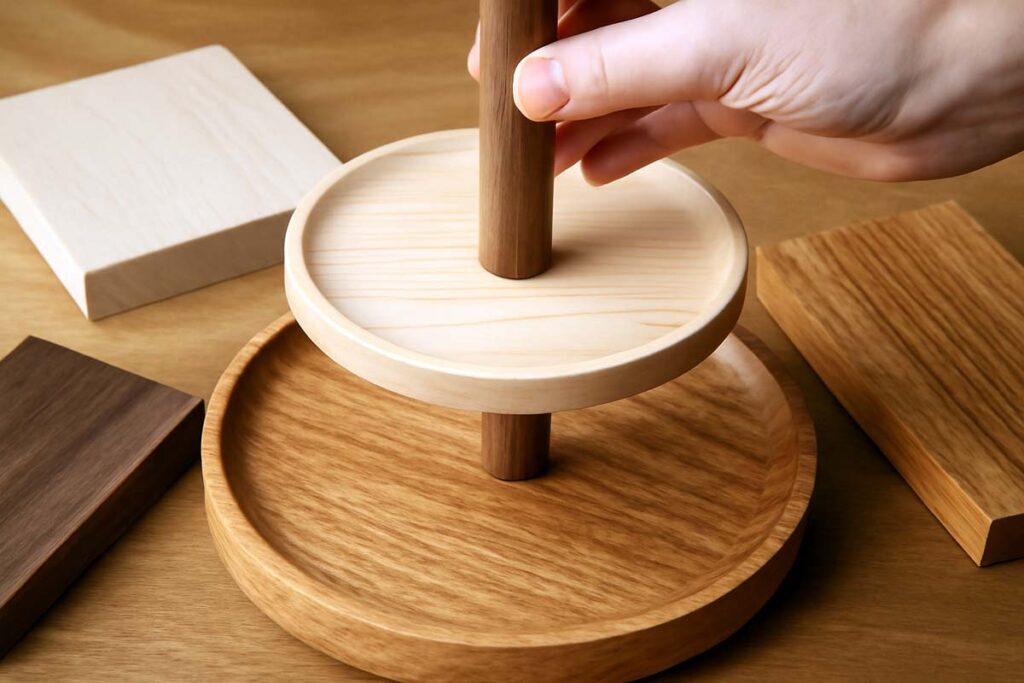
The right wood will ensure:
- Strength: The wood should be able to hold the weight of your decorative items, dishes, or whatever else you plan to place on your tiered stand.
- Durability: A sturdy piece of wood will last longer, even in high-traffic areas where it might get knocked or bumped.
- Aesthetics: The grain, color, and texture of the wood can elevate the overall design and make your tiered stand a focal point in any room.
- Workability: Some woods are easier to cut, shape, and finish than others, so if you’re doing a DIY project, workability is something to consider.
So, now that we know why it’s important, let’s get to the fun part—the best wood types for making your tiered tray stand.
1. Maple Wood: A Classic Choice for Sturdiness
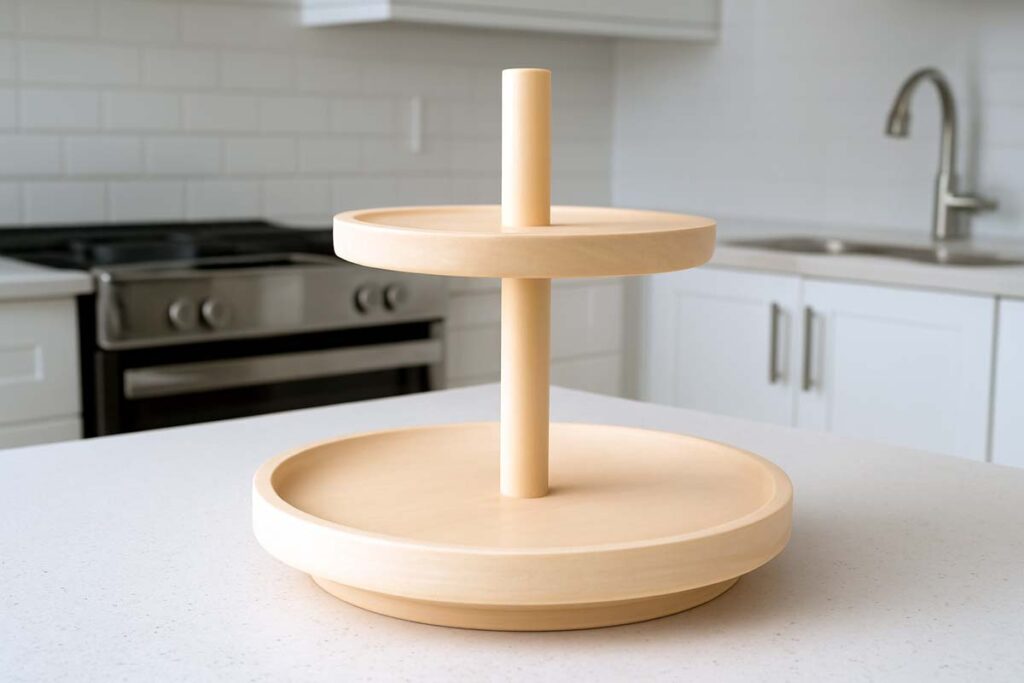
Why Maple Works Well
If you’ve ever worked with maple, you’ll know it’s a wood that combines strength with ease of use. Maple is incredibly durable and has a smooth texture that makes it perfect for crafting tiered tray stands.
- Strength: Maple is a hardwood, which means it’s strong enough to support multiple tiers and heavier items without sagging or warping.
- Smooth Finish: It has a fine grain that’s easy to finish, and its light, natural color makes it ideal for staining or painting to match your decor.
- Workability: Maple is easy to work with, so whether you’re using hand tools or power tools, it responds well to both.
Best Uses
If you want a tiered tray stand that’s going to hold up in the long run without a lot of maintenance, maple is a great option. It’s sturdy, doesn’t easily dent, and will look great for years to come.
2. Oak Wood: The Ultimate in Durability
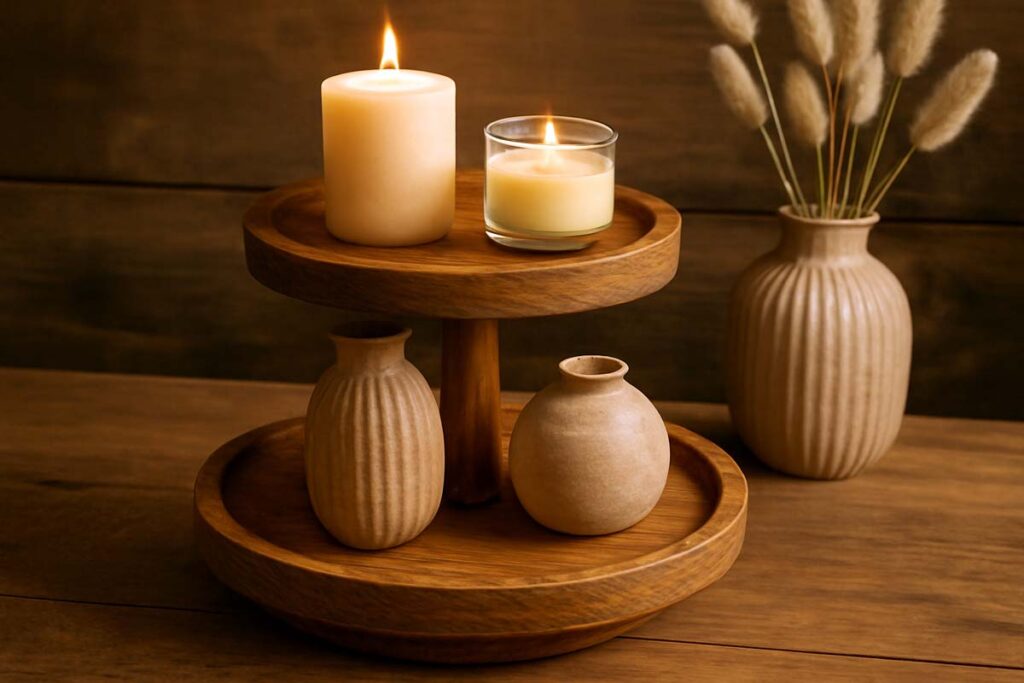
Why Oak Works Well
Oak is one of the most traditional hardwoods for furniture making, and it’s also a fantastic choice for tiered tray stands. Known for its strength and resilience, oak provides a timeless look with a bit of rustic charm.
- Durability: Oak is incredibly strong and can handle heavy loads, making it perfect for a tiered tray stand that you want to last.
- Grain Pattern: Oak has a bold, prominent grain pattern that can add a lot of character to your stand. If you’re looking for something with a rustic or farmhouse style, oak is an excellent choice.
- Finishing Options: Whether you prefer a natural, polished finish or a distressed look, oak holds stain and paint well.
Best Uses
If you’re designing a stand that will be used frequently or for heavier items (like candles, vases, or stacked dishes), oak will provide the strength you need while giving your stand that beautiful, rustic appearance.
3. Walnut Wood: Elegant and Strong
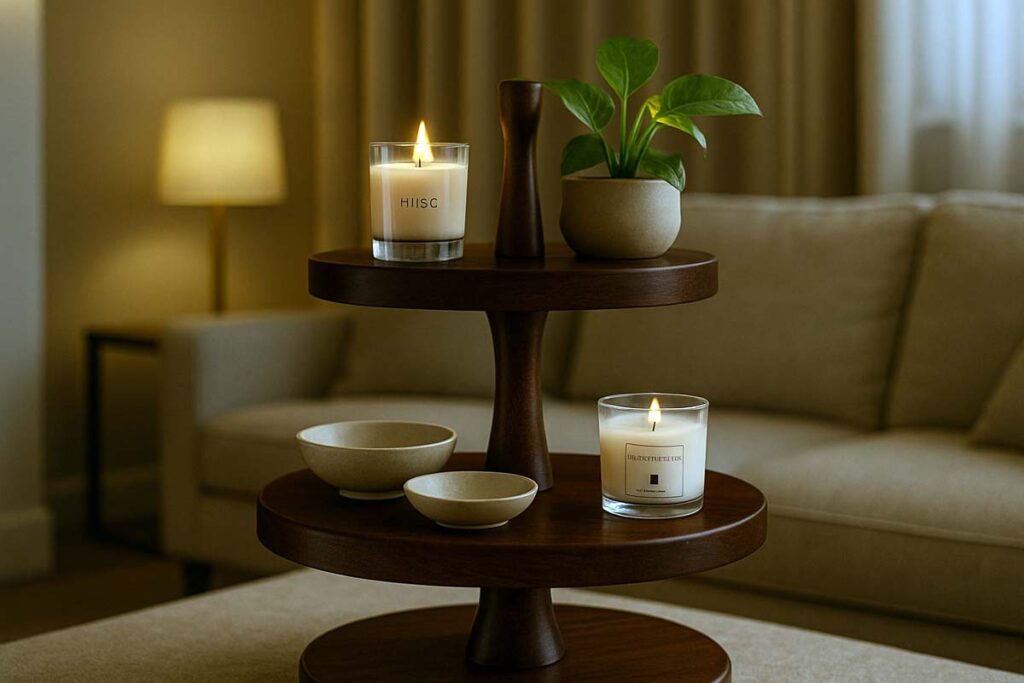
Why Walnut Works Well
Walnut is one of the most beautiful woods out there, known for its rich, dark color and sleek finish. If you’re looking for something that combines beauty and durability, walnut is an excellent choice for your tiered tray stand.
- Strength: Though it’s slightly softer than oak, walnut is still very strong and sturdy, making it a great choice for a tiered tray stand that needs to hold multiple items.
- Aesthetic Appeal: The deep, rich color of walnut gives it an elegant feel that can elevate the look of any room. It’s perfect for more refined or modern designs.
- Workability: Walnut is easy to shape and carve, so if you’re looking to add decorative elements to your stand, walnut responds well to fine details.
Best Uses
Walnut works best for those looking for a tiered tray stand with a bit of sophistication. If you want something that’s not only strong but also adds a luxurious touch to your space, walnut is the way to go.
4. Cherry Wood: The Beauty of Aging Gracefully
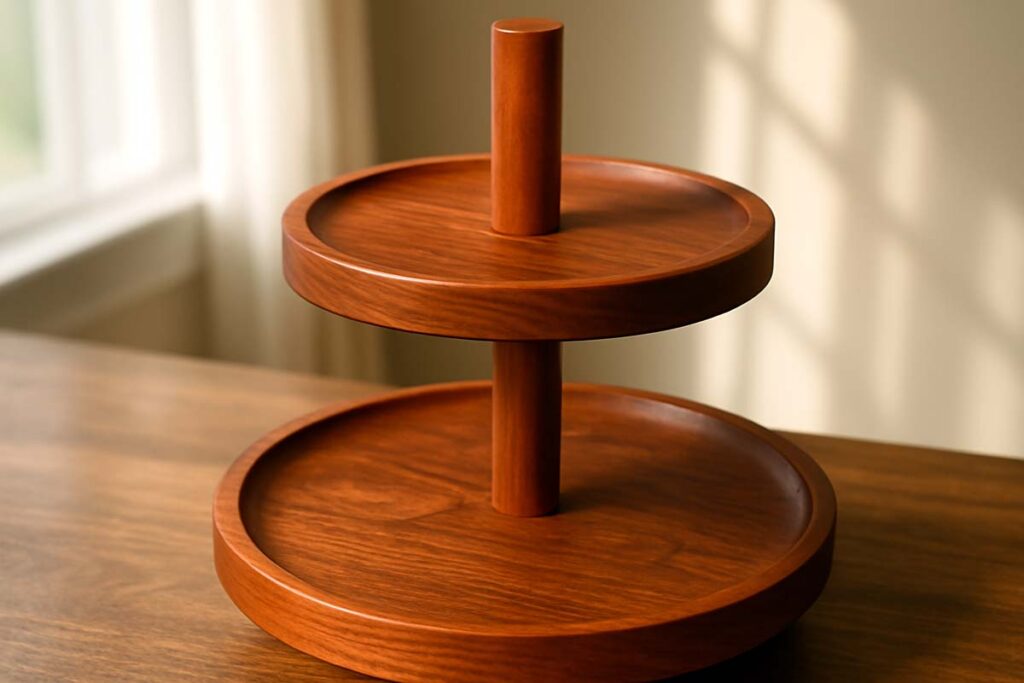
Why Cherry Works Well
Cherry wood is a favorite among woodworkers for its smooth texture and ability to age beautifully over time. The wood starts as a light pinkish tone but darkens into a rich reddish-brown as it ages, giving it an even more striking appearance.
- Strength: While not as heavy-duty as oak, cherry is still a strong hardwood that can easily hold up multiple tiers and decorative items.
- Aging Gracefully: Cherry’s unique aging process means your tiered tray stand will only look better as it gets older. The color deepens, and the wood develops a rich patina.
- Smooth Texture: Cherry has a smooth, even texture that makes it easy to work with and finish. It accepts stains and finishes well, allowing you to customize it to your preferences.
Best Uses
If you’re aiming for a tiered tray stand with a bit of elegance and a unique aging process, cherry wood is an excellent choice. Its beauty only improves with time, making it a great investment.
5. Pine Wood: Affordable and Lightweight
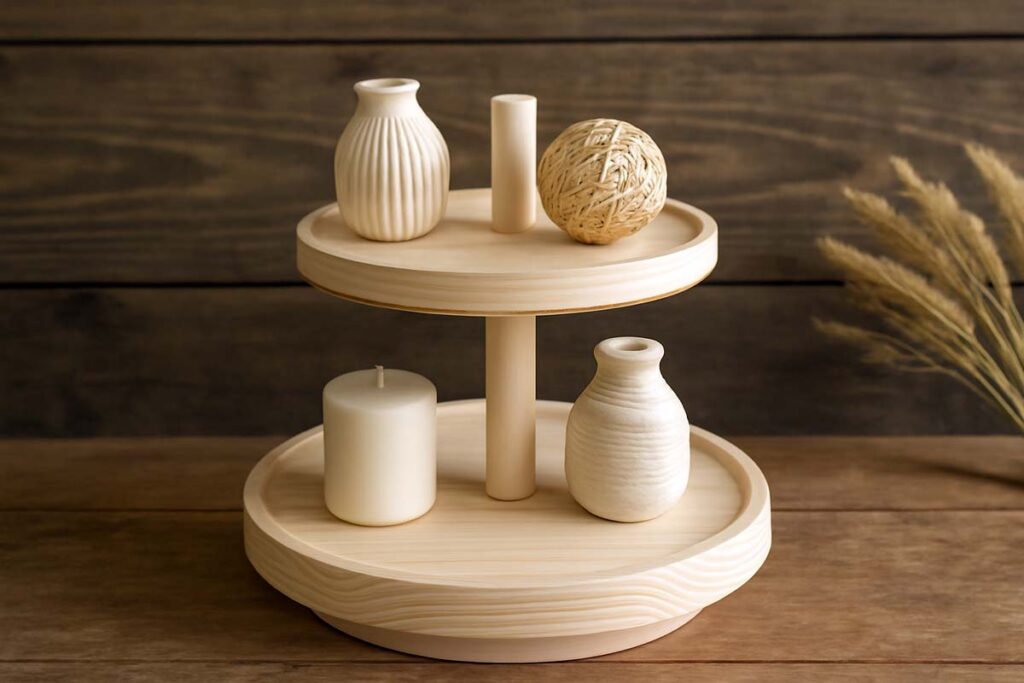
Why Pine Works Well
Pine is a softer wood compared to the hardwoods mentioned above, but it has its own set of advantages when building tiered tray stands. It’s affordable, lightweight, and easy to work with, making it a great option for beginners or anyone looking to save some money without sacrificing style.
- Affordability: Pine is much more affordable than hardwoods like oak and walnut, making it an excellent choice if you’re on a budget.
- Lightweight: Because it’s a softer wood, pine is lighter, which makes it easy to move around and position.
- Easy to Work With: Pine is one of the easiest woods to cut and shape, making it great for DIY projects. Plus, it holds paint and stains well, so you can easily customize your tiered tray stand.
Best Uses
If you’re making a tiered tray stand on a budget or want something that’s lightweight and easy to handle, pine is the way to go. It’s perfect for casual or rustic-themed spaces.
6. Cedar Wood: A Natural Fresh Scent
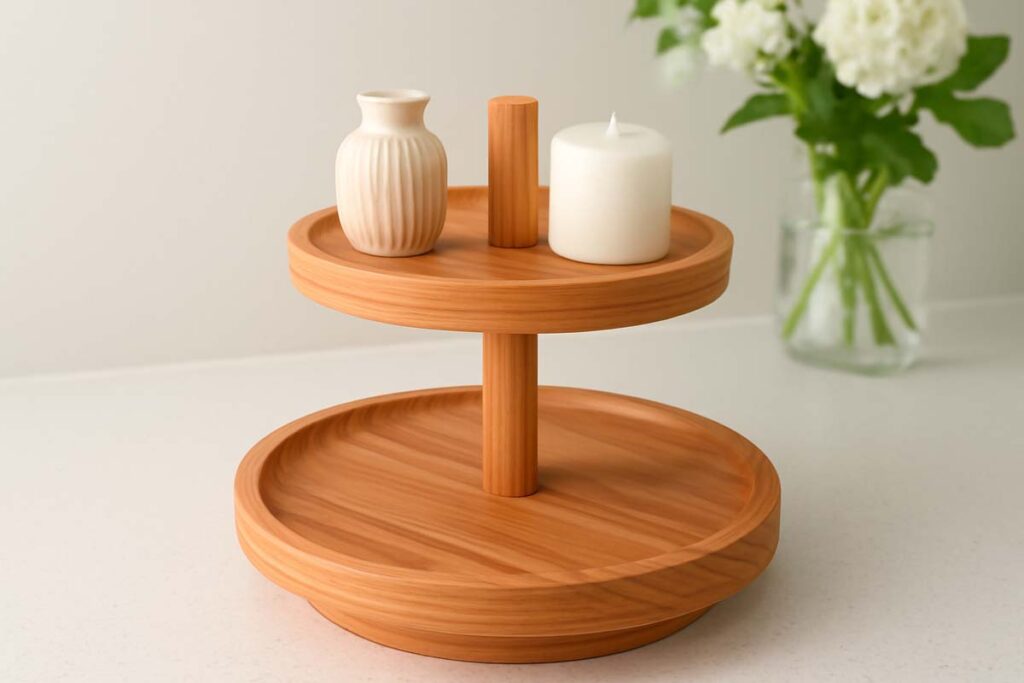
Why Cedar Works Well
Cedar is a versatile wood that is often overlooked for projects like tiered tray stands. It has a unique, fresh scent and a soft yet sturdy structure that makes it a great choice for decorative pieces.
- Scent: Cedar has a natural scent that can help keep your home smelling fresh, which is a nice bonus for a piece that will be displayed.
- Lightweight but Strong: While cedar is lighter than oak or maple, it’s still durable enough to hold a moderate weight without compromising strength.
- Natural Resistance: Cedar is naturally resistant to insects and moisture, which can help protect your tiered tray stand if placed in kitchens or bathrooms.
Best Uses
Cedar is ideal for those who want a tiered tray stand that’s not only functional but also gives off a pleasant scent. It’s especially great for kitchens, bathrooms, or entryways.
FAQs about Wood Types for Sturdy Tiered Tray Stands
Choosing the Best Wood for Your Tiered Tray Stand
When it comes to building a sturdy tiered tray stand, the wood you choose is critical. Whether you prefer the strength of maple or oak, the elegance of walnut or cherry, or the affordability of pine, each wood type has its own strengths and characteristics that can make your project truly special.
Here’s a quick summary to guide your decision:
- For strength: Go with maple or oak.
- For elegance: Walnut or cherry will give you a sophisticated look.
- For budget-friendly options: Pine is affordable and easy to work with.
- For a fresh scent and natural resistance: Try cedar.
Choosing the right wood for your tiered tray stand will ensure that your creation is not only beautiful but also functional and long-lasting. Whatever you decide, remember that the best wood is the one that suits your style, needs, and craftsmanship.
Happy woodworking, and I can’t wait to see what you create!

